Leftovers
Make new meals or snacks from leftovers when cooking
When you are using real ingredients - as we do in these recipes - and the focus of the meal is a large, single vegetable, such as mooli, lauki or torai, you can find yourself with too much of the main mixture for what you need - maybe that vegetable was just a bit too long.
So, what can we do? It would be immoral to throw it away. It is best to make something else from it.
There are certain recipe formats that lend themselves to this open-ended meal manufacture. All you need to do is to add something and you have a new, different meal.
From making these recipes yourself, you have a good idea of the consistency and important ingredients that you need to make any particular meal.
All you need to do is to take whatever you have and add whatever is needed and carry on from there.
Here are some examples of meals that lend themselves to this type of activity...
There are plenty more but you get the idea - just take what you have, add ingredients to make it similar to what is in the meal and continue from there.
In addition to using ingredients that are in excess of what you need for a particular meal, you can use left-overs from previous meals although this has to come with the warning that you shouldn't keep on doing this otherwise you could end up with some of the ingredients having been processed several times, which is just tempting fate.
Here is one example of the sort of thing you can do - in this case, processing an excess of mooli paratha mixture...
Method:
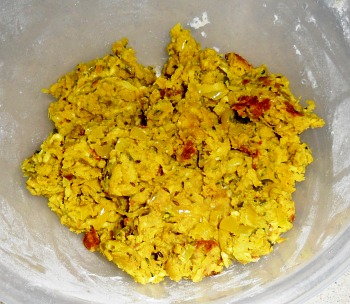 | Excess mooli paratha mixture
from another recipe. |
This is some left-over mixture from making spiral mooli paraunthas with some cooked besan already in it.
However, the amount of besan needed to make the filling stiff enough for parautha is not more than we can have in pakora so all we need to do is to add some more besan - enough to make it sticky.
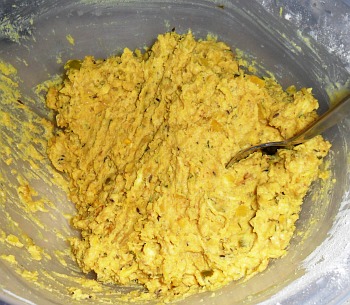 | With some chichpea flour added, along with a
bit of water and so on, we have a good mixture. |
Here, I've added a bit more than that so that I can add some extra liquid so as to bind the besan together.
You can add anything you like, of course, and if you want to add some chopped spinach or a bit of fresh coriander leaf and some lemon juice, that is up to you.
It is your meal, you can make it taste of whatever you like and the only rule is that you need to be able to cook it properly.
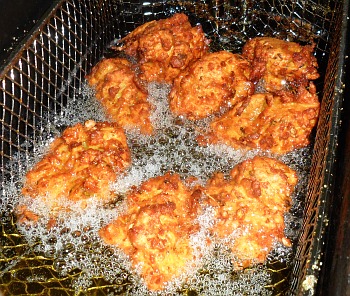 | Cook them at 165C, following
the pakora recipe now. |
Now following the procedure for making pakoras, I have put small portions (smaller than usual - why not have mini-pakoras?) in oil at 165C.
At that temperature, anything inside them that needs cooking will get cooked by the time the outside is browned enough.
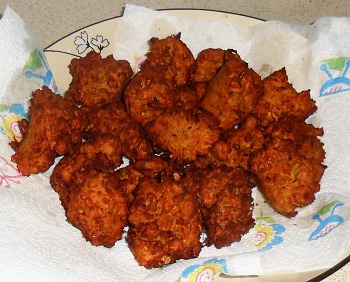 | Drain off any excess oil and soak
up what is left on kitchen towel. |
Once they have cooked enough, take them out and put them on some kitchen towel to soak up any excess oil.
You can see below that the final result is a nice looking, snack-sized pakoras.
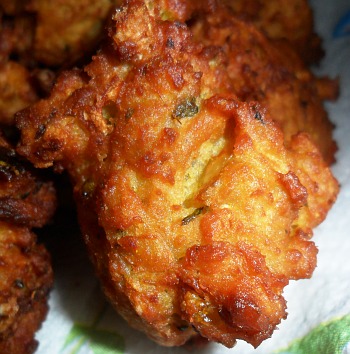 | Tasty pakoras made from the left-
-over ingredients of another meal. |
Copyright
©2005 - 2021
P.A.Grosse. All Rights Reserved
|